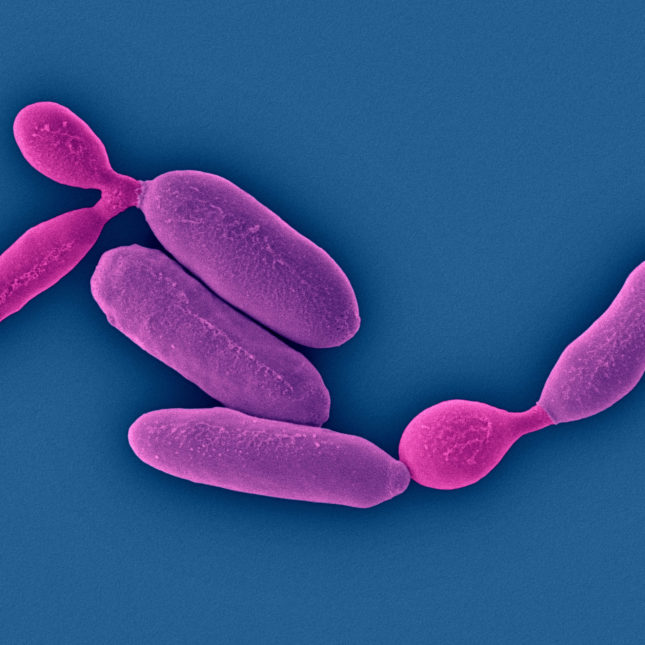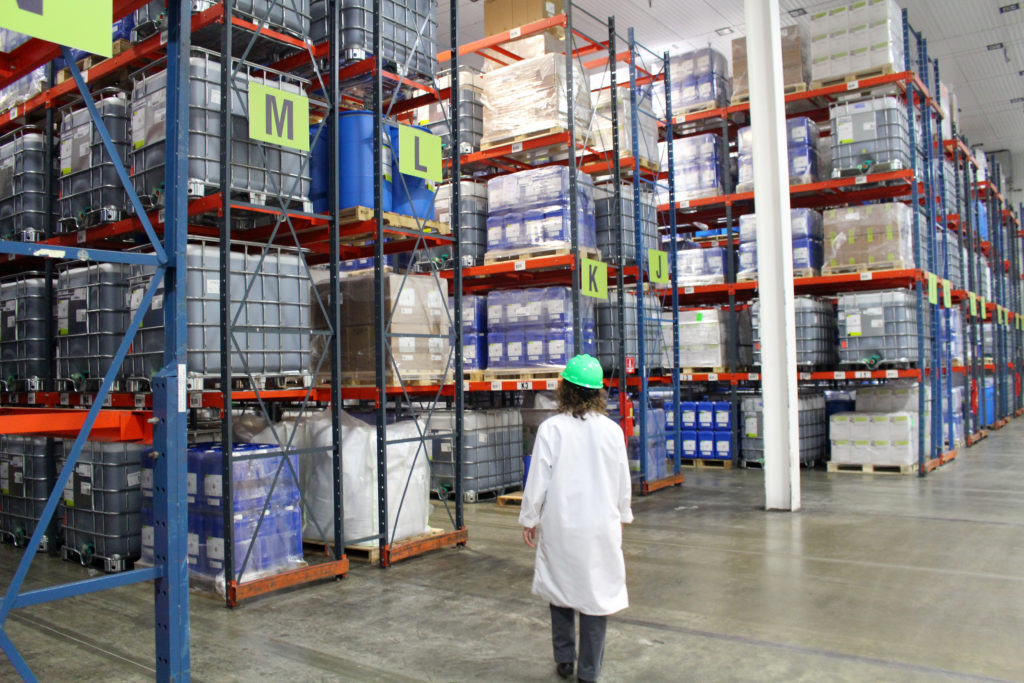Hunt for enzymes heats up, a potential boon for biotech and beyond

Mikako Sasa is a prospector. Each weekend near Copenhagen, she grabs her special bag, a few plastic tubes, and heads out to the Denmark countryside to collect dirt and mushrooms. What she really wants are enzymes.
Other prospectors like Sasa scour barnyards or anthills. Some venture to Antarctica. Some drive submersible robots to plunge to deep-sea volcanic vents. All are in search for microorganisms that produce enzymes, in hopes of unfolding the mystery of these substances.
“We’re trying to find useful enzymes that do useful jobs,” is how Jeffrey Gardner, a fellow prospector who roots around in bacteria purchased from a national online library, puts it.
Indeed, the search for novel enzymes — substances that are produced by living organisms and that act as catalysts prompting other substances to react — is booming, in no small part because of cheap and quick genome sequencing. That could fuel advances in biotech and beyond.
Unlocking the mysteries of enzymes could have dramatic payoff, with new cancer drugs, with antibiotics that sidestep viral defenses, or with personalized medicines. Recently, for example, researchers at Penn State concluded that a compound produced in grapes by an enzyme reduced colon cancer in mice.
Outside the body, enzymes perform their functions in a myriad of ways, from making cheese to cutting grease, to helping plants grow, to cleaning contact lenses and sopping up oil spills. Energy companies see enzymes as a key to biofuels, farmers may replace harsh chemicals on their fields with more “natural” enzymes, and bakers could produce the perfect loaf every time.
The challenge for scientists is to figure out which enzymes do exactly what, when and how. A simple bacterium or fungus, for example, may produce thousands of enzymes, and dozens or more enzymes may work together to get a job done.
With a map of the genome of that bacterium and its enzyme, scientists can link specific enzymes to specific genes. Then by editing the genes — turning them on or off — they can begin to try to figure out what functions each enzyme has.
“Once we have an enzyme and we characterize its baseline functions, can we characterize its parameters?” said Gardner. “How fast does it do its job? What is the range? Can it work on two or three different chemicals? Is it specific, or promiscuous? Is it an enzyme that falls apart very easily, or is it robust?”
Once the exact role of an enzyme is understood and linked with a gene, scientists have control of a powerful tool. They can alter the genetic instructions to produce more — or less — of the enzymes. They can place the genes in another organism, one that is heartier, for example. Or they can search for similar genes in another organism that may produce an enzyme with novel, better properties.
“Because nature is constantly optimizing the antibiotics they make, quite often we can find another bacteria that makes a variant of the original antibiotic,” said Bo Li, an assistant professor of chemistry at the University of North Carolina at Chapel Hill, who studies the enzymatic functions of antibiotics. “That new variant may have special properties, be more stable, or more effective against multi-drug resistant bacteria.”
Genomic sequencing has become so cheap — a simple bacterium’s genome can be mapped for about $1,000 — that scientists are suddenly flooded with such maps.
“The rate of sequencing microbes has vastly outpaced the rate that we can characterize,” Li noted. “But once you get a genome sequence, more than 80 percent of that sequence is uncharacterized. We don’t know what it does.”

To help understand these enzymes, researchers are developing huge data sets of genomic sequences. And that alone has meant a sea change for researchers.
“For my work — enzyme discovery — sequencing has made all the difference,” said Emily Balskus, a chemist whose lab at Harvard University does what she calls “bioprospecting” in the human gut.
Researchers have identified the function of only about one-quarter of the genes in our digestive system, she said. Understanding more could lead, for example, to individually tailored prescriptions for patients based on what they have in their bodies. Or to dietary changes based on what an individual’s gut biome can digest well, she said.
“I really believe that if we want to really harness and understand the human microbiome, and improve human health, the key thing that will allow us to do that is to understand what these organisms can do chemically, what are they actually producing in the human body,” Balskus said. “There’s really a lot out there in the universe that we do not understand very well.”
Kenichi Yokoyama, who heads a lab at Duke University studying enzymes and fungal infections, agrees. Genetic mapping “has become significantly easier,” he said at his lab. “What’s still challenging is to connect those genes to their actual functions.”
“We do have a long-term goal, but in reality, we focus on specific questions,” he said. “Our immediate goals are to understand the basic fundamental mechanisms.”
In many cases, said Li at UNC, existing theories are wrong. “Because we can do the genome sequencing, we realize these bacteria that were previously never thought of, would do these chemistries.
“For example, human gut biomes. They do some pretty interesting chemistry. They degrade or modify drugs and turn them into toxic byproducts, so a lot of the toxins from certain drugs, we realize, come from gut microbes. Now we understand these mechanisms much better.”
Even with the avalanche of genomic sequences from known enzymes, there still is the call, and the excitement, of collecting new samples in the field. Craig Venter, who helped sequence the human genome, has launched expeditions to the world’s oceans and to Antarctica to collect samples from extreme environments for sequencing. The National Oceanic and Atmospheric Administration has sponsored deep sea voyages to collect samples. Other researchers have collected samples in hostile environments ranging from the Yellowstone hot springs to the Dead Sea.
Sasa, who ventures in the woods of Denmark each weekend, already has 45,000 specimens at hand in the enzyme library of Novozymes, a global biotech company where she works in Copenhagen. But “I look for diversity,” she said in a telephone interview. “Diversity is the key.”
A trained biologist and mycologist, she can size up a spot in the woods based on what is growing there — beech trees usually mean alkaline soils, for example. She may do preliminary field testing in the forest, juggling nutrients and a Petri dish. And she looks for mushrooms with a Goldilocks eye: “Not too old, not too young. I want to get ahold of the spores under the cap of the mushrooms.”
In many cases, she has a narrow goal — species that produce enzymes with a certain function. But there is fun in looking for entirely new species in a soil sample, she said.
“I don’t know what’s in there beforehand. I can throw the soil sample into my freezer, a look at what kinds survive. I might bake it for an hour at 100 degrees. You can play around with a soil sample.”
The value of bioprospecting is to find enzymes with novel properties. But scientists have plenty to study with the samples they have already, or ones they get unexpectedly.
“People will give us stuff. We got a sample recently from an organism that came from the slime of a fish,” said Gardner, at his University of Maryland, Baltimore County, lab in Catonsville. One of his main focuses is on a bacterium collected in the 1950s in a rice paddy in Japan. He has been studying that for almost 10 years. The bacterium produces more than 200 enzymes that can break down cellulose with extreme efficiency, and it wields them in a fashion that Gardner is just beginning to understand. Knowing how that is done would be invaluable to the effort to produce biofuels, he noted.
Indeed, while the pharmaceutical industry is keenly interested in the medical capabilities of enzymes in humans, many other industries are discovering the benefits of enzymes.
Novozymes is a big player in industrial use of enzymes. It has 6,200 employees in places including China, India, Brazil, and the United States. It is mass-producing enzymes for 40 industries, including household cleaning, food production, and agriculture. Novozymes promotes enzymes as natural and sustainable.
At the company’s North American regional headquarters in Franklinton, N.C., the enzymes are nurtured from a small batch of microbes. With the oxygen, temperature, nutrients, and acidity carefully monitored, they grow in about two months to fill three-story-tall stainless steel tanks.
The producers of the enzymes, the bacteria or fungi, are filtered out and given to local farmers as compost. The remaining enzyme can be kept as a liquid or made into powder.
Applying biological solutions “has a very large potential,” said Peder Holk Nielsen, president of Novozymes, in a phone interview from Copenhagen. “There are so many areas we can help people save energy, help them save chemicals, help them save on water, help them get more out of raw materials, we can help to increase feed conversion, we can help to increase crop yields. I’m not saying everything can be done by industrial biotech, but industrial biotech is core to a lot of it.”
“We think of the previous century as the century of chemistry,” Nielsen said, “and we think of this century as the century of biotechnology.”